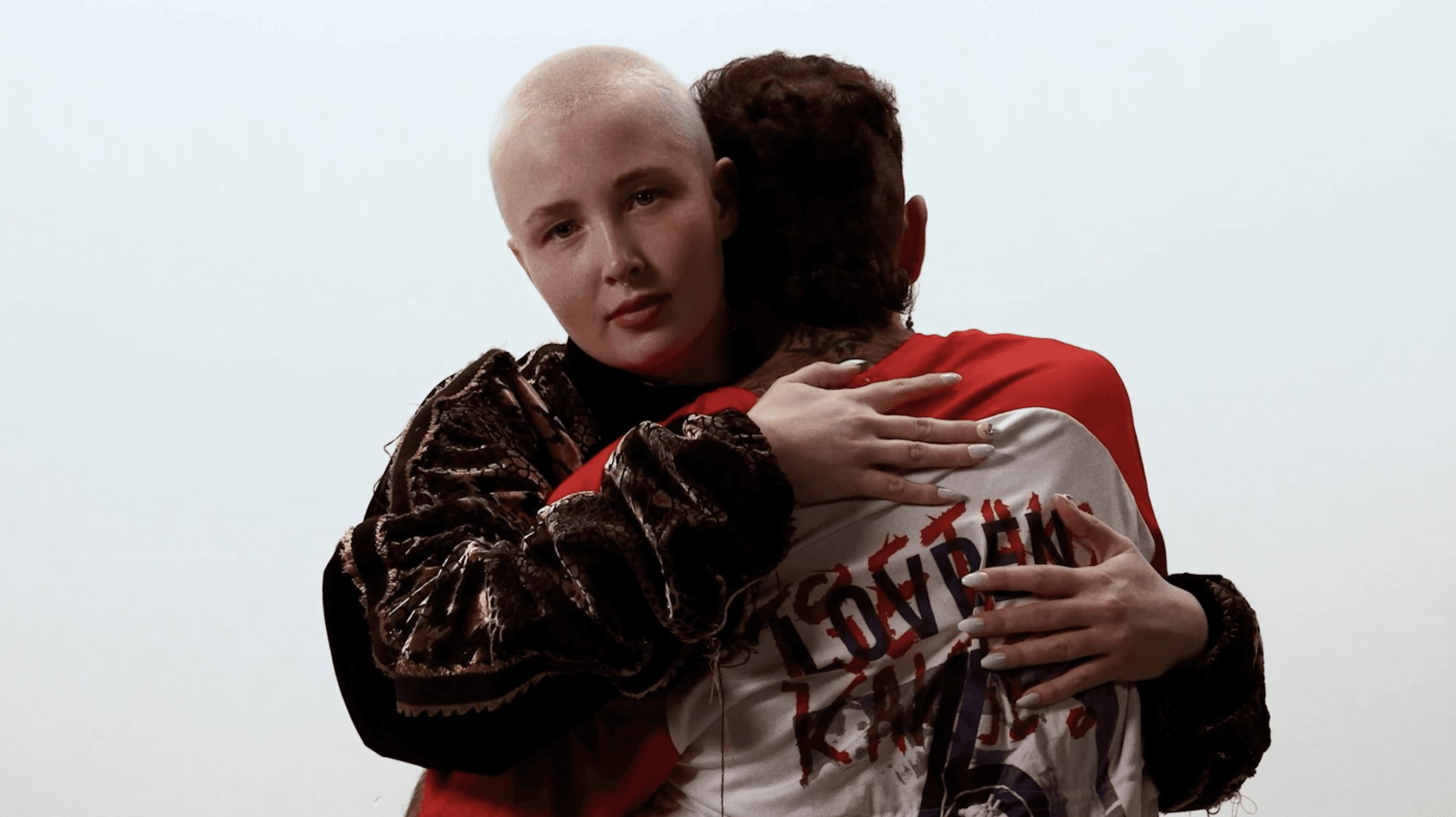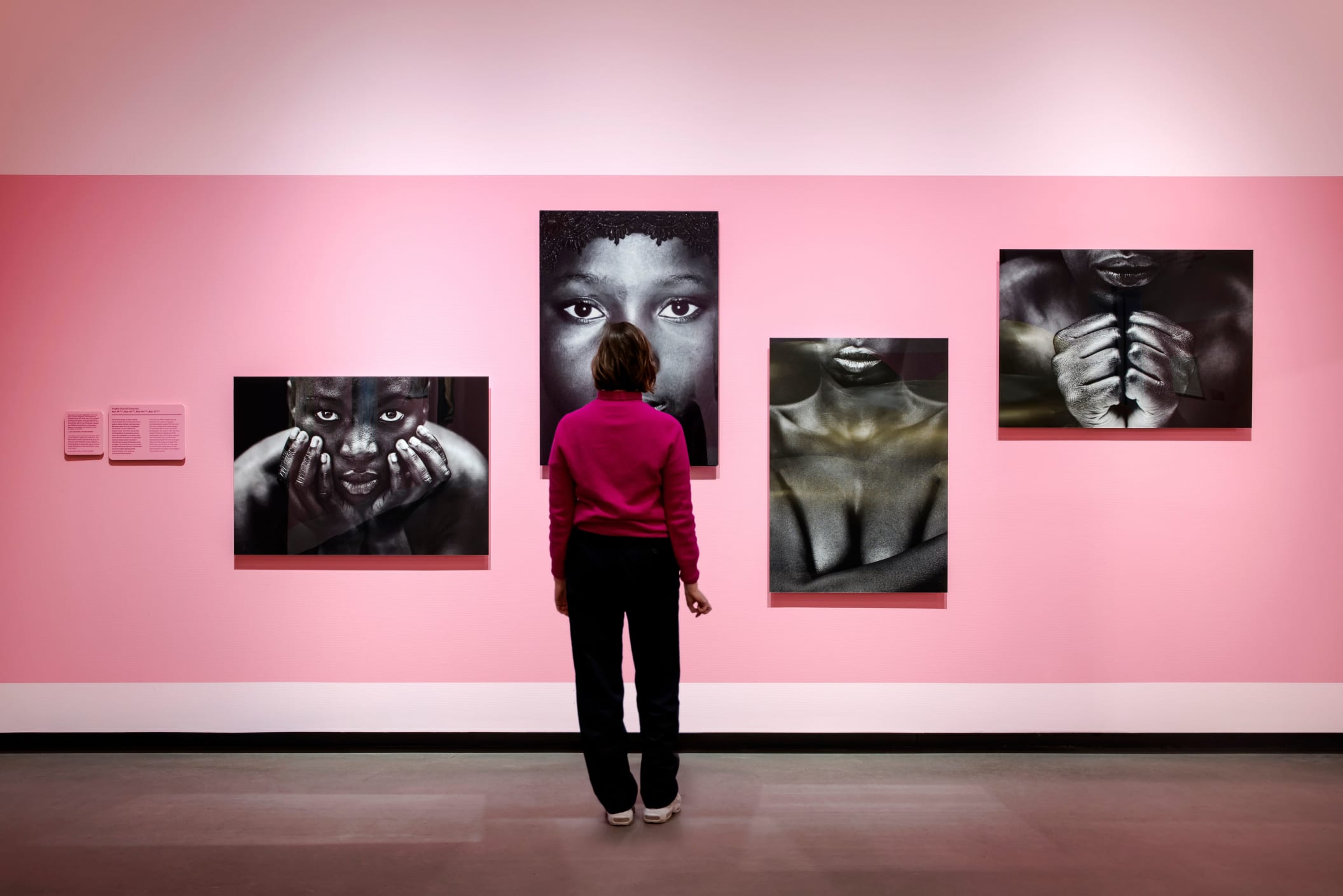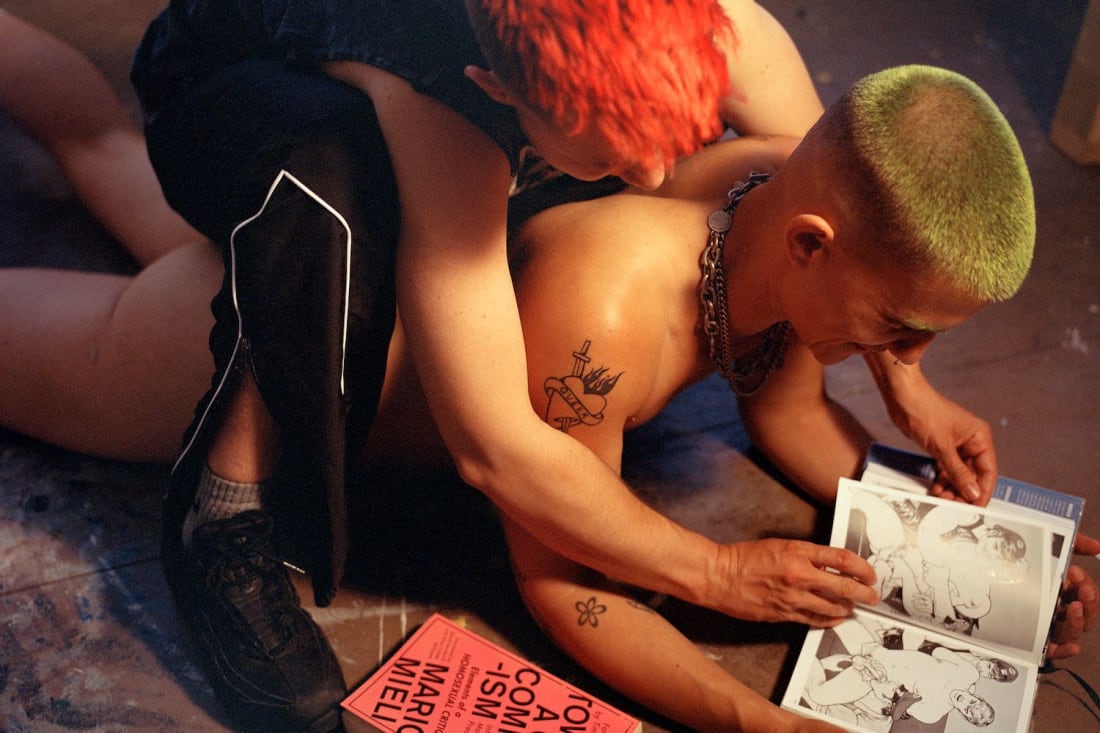These joyful images show trans people how they want to be seen
Showing at Museum Arnhem, Netherlands, this subversive exhibition is working to redefine cis-normative representations of trans and queer pride
Showing at Museum Arnhem, Netherlands, this subversive exhibition is working to redefine cis-normative representations of trans and queer pride
When Dutch creative Julius Thissen was asked by the prestigious Museum Arnhem to put together a residency for the trans and queer community in early 2021, it felt like a homecoming. The creative space is known for going against the grain; it famously implemented radical feminist policies under former director Liesbeth Brandt Corstius in the 1980s, which insisted that at least 50% of all acquired works in the museum had to be from female artists. Inspired by this legacy, Julius and his team wanted to follow in Corstius’ footsteps, this time with the chance to represent and champion trans and queer artists on a scale that had never before been permitted to the community in this space. It was a necessary and welcome change: “I felt very at home there, so I happily accepted,” Julius recalls.
After putting out an open call to artists in the community, Julius and his collaborators selected seven residents to lead creative direction of the exhibition: Dexter, Sarjon, Jip, Storm, Alara, Larisa and Zacquel. The requirements were simple: no glossy CV, no professional experience, just an artistic vision that could celebrate trans and queer voices in new and provocative ways. “Really, these conversations need to be accessible for people beyond a professional realm,” Julius says.
When the residents came together to brainstorm what they wanted to create, they knew it had to feel inherently personal – each of them wanted visitors (and themselves!) to feel joyful, politically activated, and above all else, seen. “When trans people are visible in a museum context, it's often focussed on transition – as if a viewer can get to know trans identities through a medical story,” Julius explains. “As a result, we see that not a lot of art that is about us is actually from us. So the group came together and asked themselves, ‘how can we talk about the body but yet also do so on our own terms, and regain a sense of agency?’”
Almost two years on from Julius’ initial invitation, the team’s collective vision has culminated in the interdisciplinary exhibition, How Dare You Make Me Feel This Way. The presented works across photography, film and installation are centred around the theme of trans and queer joy – an emboldening and defiant response to the political violence currently facing the community globally. Now, several months into the exhibition's residency, woo sat down with Julius to reflect on core memories in the making of this cross-collaborative project, the importance of self-representation, and what the exhibition means to the community.


How Dare You Make Me Feel This Way champions queer artists. Why might this be more necessary than ever given today’s political climate?
Julius: The cis-gaze, of course, is very dominant in the queer community. So often, when art is about us, it's not spoken or coming directly from us – we're not actively speaking about ourselves. And when we see things about queer joy, it's often only in an overly-capitalised rhetoric. Pride messaging like “love is love”, “be you” or “be yourself” are not actually activating anything politically; big corporations use these capsule Pride campaigns to make money, meanwhile no queer or trans voices are a part of the campaign team. So the group found it very important to choose art that is about joy, but also speaks about a sense of agency that moves away from this “rainbows and unicorns” type of pride. Yes, we’re here and we’re queer, but this is the political reality and realm that we live in and we need to change that. Despite all these challenges that we face, we reclaim our right to be happy and our right to exist.
What are some of the exhibition’s core themes?
Julius: The work, either conceptually, visually, or spiritually, must remind us in some regard of trans and queer joy. But also the body, politics, sexuality, autonomy – and we never wanted to lose sight of intersectionality. We have two rooms of the exhibition and the first is almost entirely filled with mostly self-portraits. So we are predominantly confronted with how artists want to also visualise their own identities.
Julius: A very good example is the work of Leo Xander Foo: Even though many of us feel that we need to get beyond the point where people view us through this medical lens, the work of Leo very beautifully illustrates that our work can be about a transition as long as it's told from our own perspectives. I remember Leo saying, ‘I just had top surgery, which is something that brings me a lot of joy and confidence – that's what I want to share with the visitor.’ So then his transition and this top surgery becomes a mere detail; what the self-portraits are really about is his confidence and his artistic and personal journey.”

Can you talk us through the exhibition’s name, How Dare You Make Me Feel This Way?
Julius: The title stemmed from a conversation that we had about a specific artwork by the artist Ryan Trecartin, whose work is not in the show. John, one of the exhibition residents, pointed out that Ryan’s work is beautiful as well as gory and disgusting. He said, ‘I hate it. I love it: how dare he make me feel this way?’ And the group really connected to this idea about art that doesn't just show you one singular narrative. Art is good if it causes friction. We tried to totally embrace our own personal subjectivity and just present the visitor with a collection of perspectives that can be beautiful but also confronting. You can provoke something and be political, but can still also be very aesthetic, for instance.
The exhibition is currently live at Arnhem – what do you hope visitors are taking away from the experience and do you anticipate that it might drive change in any way?
Julius: I hope that visitors on an individual level also find a sense of joy. And if they're queer themself, of course, feel represented in the right way, or feel celebrated on a deeper level than just the “you be you” Pride rhetoric. But for the cisgender visitor, I hope it's a way to help them let go of this programmed way of relating to trans folk through wanting to study trans folk. Instead, we want them to just open up and be aware that being trans and queerness is just as personal and individual from one person to the next.
Julius: Then on a structural level, I think that Museum Arnhem giving us this space is a step in the right direction. I think it will help other museums to open up their working practice a bit more. I hope it encourages more structural representation in the professional field and museum field at large, like seeing us in permanent staff positions, for instance, so that we have more artists in a steady collection and that their work gets purchased.




How Dare You Make Me Feel This Way is showing at Museum Arnhem, Netherlands, until 14 May 2023.



